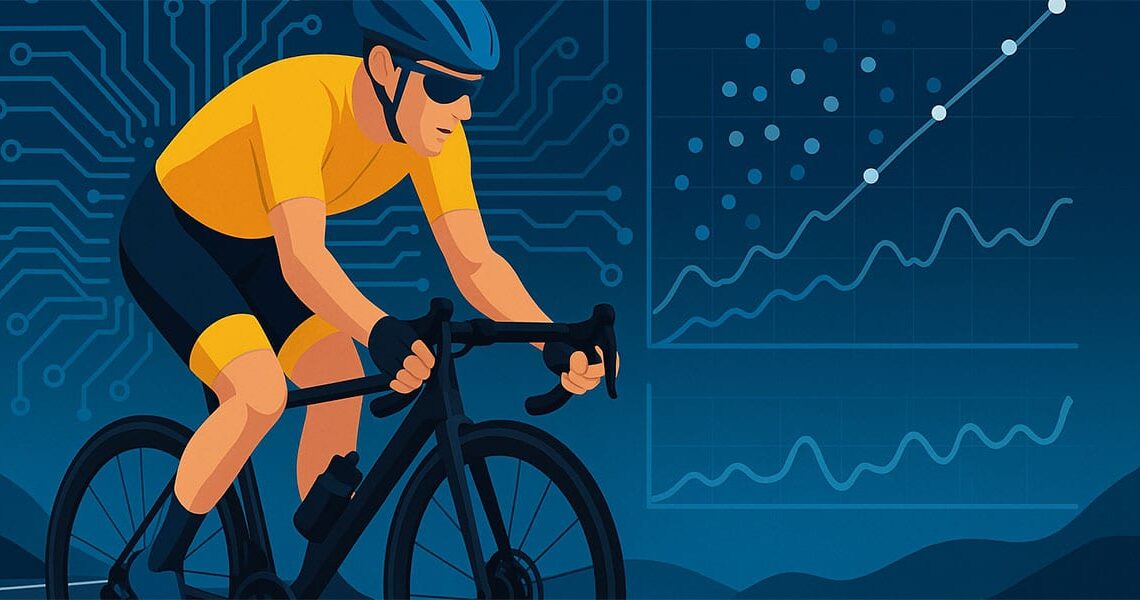
In a sport where tactics, terrain, weather, and timing all merge into one fluid contest, predicting the outcome of a cycling race can seem like guesswork. Yet, as machine learning becomes more accessible to fans, punters, and analysts alike, there’s a growing push to apply data-driven models to a sport that has long thrived on unpredictability. Whether it’s Grand Tour stage wins or under-the-radar breakaway performances, the cycling betting market is now being shaped by algorithms that are doing much more than calculating averages.
Betting Gets Smarter on Both Sides of the Atlantic
Across the United States, cycling betting remains niche, but it’s growing quietly. Even in states like Texas, where sports betting laws remain restrictive, interest in niche sports like cycling continues to grow. While fans there may not have access to locally licensed books, many still follow odds and strategies through national and offshore platforms that track cycling markets. Sites that discuss Texas sports betting often highlight how U.S. fans engage with analysis and odds. These platforms now include cycling in their menus, giving fans access to odds not just on who wins, but also on top‑three finishes, head-to-heads, and jersey competitions. They often come with prop bets tied to terrain, stage type, or time gaps, which open the door for deeper analysis. However, it’s important for fans to check the regulations of their area.
As legal sports betting spreads and tech-savvy punters start to look beyond football or basketball, cycling’s complexity becomes a feature, not a bug. It’s precisely because of the moving parts, the climbs, the domestiques, and the team tactics that data science is proving so useful.
The Inputs: What Data Really Matters?
Machine learning models are only as good as the information they’re fed. In cycling, the variables go well beyond just rider form. Some of the most effective models incorporate:
- Rider-specific power output (watts/kg), especially on mountain stages.
- Team strength, based on combined rider points or prior team time trial results.
- Weather forecasts, including wind direction and temperature.
- Stage profile metrics: elevation gain, average gradients, and categorized climbs.
- Previous race results on similar terrain (not just recent form).
- Altitude training history and recent elevation exposure.
- Rider consistency and fatigue markers over multiple race days.
- Technical course features such as narrow descents or cobblestones.
Many betting enthusiasts now scrape or buy access to databases that track these inputs over multiple seasons. Others turn to cycling-specific APIs or even Strava data to plug into model training. This goes beyond traditional punditry. It’s not about who “looks good” or who has momentum. It’s about quantifiable, historical data that maps likely performance.
From Spreadsheets to Python Scripts
The old spreadsheet of rider stats has given way to open-source machine learning libraries like Scikit-learn, TensorFlow, and XGBoost. While some of this might sound technical, the barrier to entry has dropped. Online tutorials walk you through how to predict stage outcomes using basic classification models.
One approach is to use supervised learning to predict whether a rider will place in the top five of a stage, based on their characteristics and the stage profile. Another model might look at team support levels to predict breakaway success rates. These aren’t infallible predictions, but they consistently outperform guesswork and, in some cases, they outperform the sportsbooks.
Some cycling bettors even model live race situations. For example, they might feed in live GPS telemetry and time gaps, comparing current race dynamics to archived races with similar metrics. This allows for mid-stage recalibration of odds in real time, creating a kind of DIY live betting dashboard.
Mobile Tools for Everyday Bettors
Not everyone running a predictive model has a data science degree. Many casual fans are now turning to mobile-friendly platforms and tools that simplify the process. Some apps pull data from pro racing feeds and provide stage-by-stage rider predictions or value indicators. These tools don’t require you to write code. They offer sliders, toggles, and matchups that can help inform bets quickly before a stage begins.
For bettors in regions where cycling betting options have expanded, a handful of these mobile tools even integrate directly with legal sportsbooks. That means you could get a model’s suggestion on a dark horse climber and place the bet within the same interface. This ease of access is reshaping how newer fans engage with the sport.
When the Models Get It Wrong
Even the best machine learning model can’t predict a crash, a hunger bonk, or a sudden team change in tactics. While models might help spot value, they’re not guarantees. Races like the Giro d’Italia or the Tour of Flanders are often decided by emotion, timing, and conditions that aren’t measurable.
However, betting with a model, even a simple one, does two things: it gives structure to your selections and it helps eliminate bias. That fan-favorite rider you always bet on? The model might show he consistently underperforms on wet descents or has a poor history against aggressive breakaways. That kind of pattern recognition is where models shine.
How the Bookmakers Are Responding
Sportsbooks, especially in Europe, have begun developing their own internal analytics to balance the playing field. They’re aware that punters are getting smarter. Some odds setters have backgrounds in data science, not just trading. This leads to faster line adjustments and, in some cases, less value in popular markets.
Still, most cycling betting remains lightly trafficked, especially compared to football or tennis. That leaves room for well-modeled insights to shine. The key isn’t just finding the likely winner, but identifying inefficiencies in the lines where the bookmaker has priced a rider too high or low based on outdated assumptions.
Looking Ahead
As real-time data from wearable tech, GPS trackers, and team radios becomes more accessible, the future of predictive modeling in cycling betting looks more precise. Fans already immersed in stats can plug into this movement. Whether you’re writing your own Python scripts or just using a model someone else shared on a Reddit thread, the game is changing.
Machine learning won’t make cycling less thrilling. It will just change how some fans watch it. Instead of shouting at the screen when a lone rider attacks 12 km from the finish, they’ll be checking whether the model flagged that exact attack based on gradient, cadence, and comparative stamina curves.
It’s not the end of intuition. It’s just a new way of listening to the numbers whispering behind the race.
The post Machine Learning Meets the Mountains: Predictive Modeling for Cycling Bets appeared first on PezCycling News.




